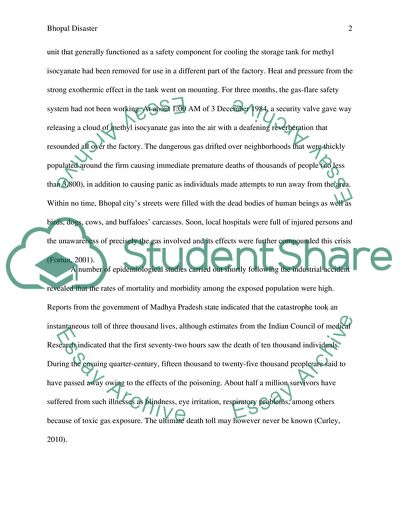Cite this document
(Bhopal Disaster in India Case Study Example | Topics and Well Written Essays - 1500 words, n.d.)
Bhopal Disaster in India Case Study Example | Topics and Well Written Essays - 1500 words. https://studentshare.org/environmental-studies/1771021-bhopal-disaster-in-india
Bhopal Disaster in India Case Study Example | Topics and Well Written Essays - 1500 words. https://studentshare.org/environmental-studies/1771021-bhopal-disaster-in-india
(Bhopal Disaster in India Case Study Example | Topics and Well Written Essays - 1500 Words)
Bhopal Disaster in India Case Study Example | Topics and Well Written Essays - 1500 Words. https://studentshare.org/environmental-studies/1771021-bhopal-disaster-in-india.
Bhopal Disaster in India Case Study Example | Topics and Well Written Essays - 1500 Words. https://studentshare.org/environmental-studies/1771021-bhopal-disaster-in-india.
“Bhopal Disaster in India Case Study Example | Topics and Well Written Essays - 1500 Words”. https://studentshare.org/environmental-studies/1771021-bhopal-disaster-in-india.


